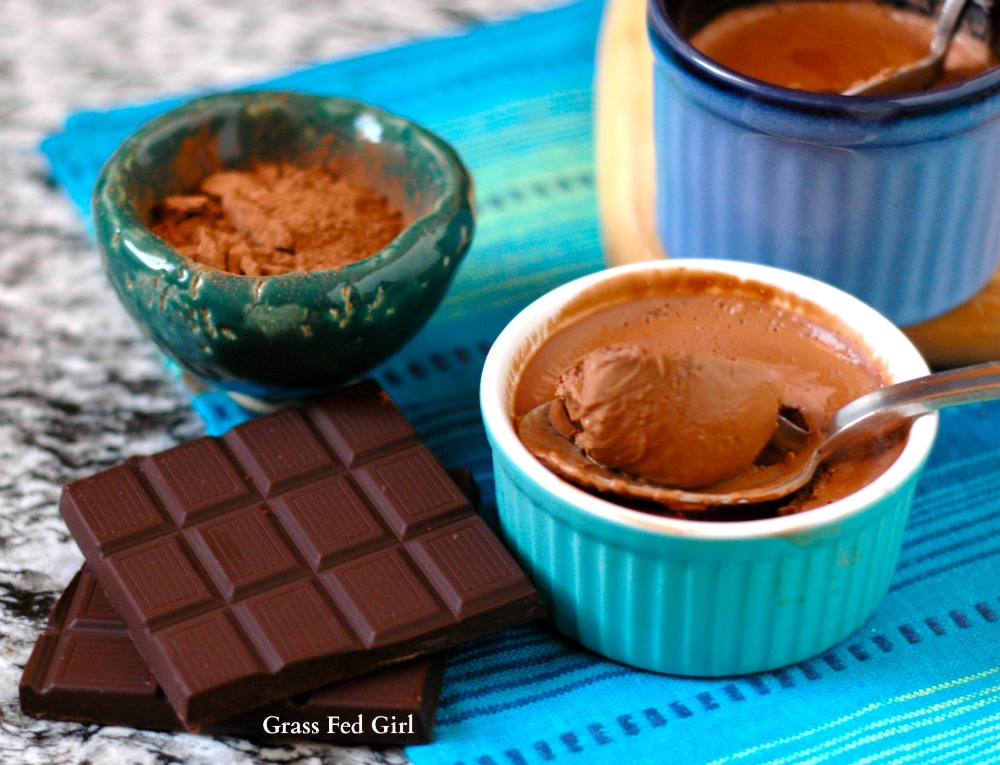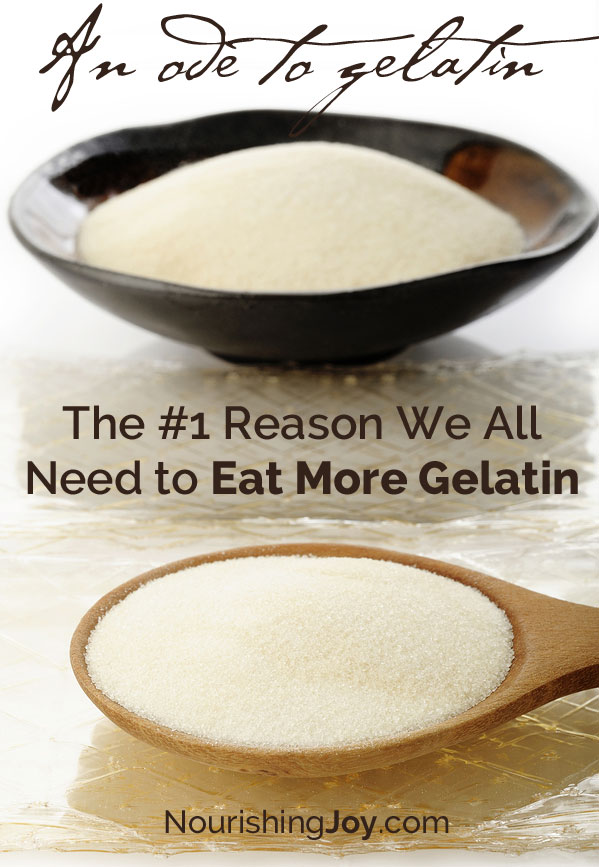Gelatin - Jello Diet Weight Loss
Gelatin or gelatine (from Latin: gelatus meaning "stiff", "frozen") is a translucent, colourless, brittle (when dry), flavourless foodstuff, derived from collagen obtained from various animal by-products. It is commonly used as a gelling agent in food, pharmaceuticals, photography, and cosmetic manufacturing. Substances containing gelatin or functioning in a similar way are called gelatinous. Gelatin is an irreversibly hydrolyzed form of collagen. It is found in most gummy candy as well as other products such as marshmallows, gelatin dessert, and some ice cream, dip and yogurt. Household gelatin comes in the form of sheets, granules, or powder. Instant types can be added to the food as they are; others need to be soaked in water beforehand.

Composition and properties
Gelatin is a mixture of peptides and proteins produced by partial hydrolysis of collagen extracted from the skin, bones, and connective tissues of animals such as domesticated cattle, chicken, pigs, and fish. During hydrolysis, the natural molecular bonds between individual collagen strands are broken down into a form that rearranges more easily. Its chemical composition is, in many respects, closely similar to that of its parent collagen. Photographic and pharmaceutical grades of gelatin are generally sourced from beef bones and pig skin.
Gelatin readily dissolves in hot water, and sets to a gel on cooling. Gelatin added directly to cold water does not dissolve well. Gelatin is also soluble in most polar solvents. Gelatin solutions show viscoelastic flow and streaming birefringence. The solubility of the gelatin is determined by the method of manufacture. Typically, gelatin can be dispersed in a relatively concentrated acid. Such dispersions are stable for 10-15 days with little or no chemical changes and are suitable for coating purposes or for extrusion into a precipitating bath.
The mechanical properties of gelatin gels are very sensitive to temperature variations, the previous thermal history of the gel, and time. These gels exist over only a small temperature range, the upper limit being the melting point of the gel, which depends on gelatin grade and concentration (but is typically less than 35 °C) and the lower limit the freezing point at which ice crystallizes. The upper melting point is below human body temperature, a factor which is important for mouthfeel of foods produced with gelatin. The viscosity of the gelatin/water mixture is greatest when the gelatin concentration is high and the mixture is kept cool (? 4 °C). The gel strength is quantified using the Bloom test.
Production
The worldwide production amount of gelatin is about 375,000 metric tons per year (roughly 827 million lb). On a commercial scale, gelatin is made from by-products of the meat and leather industry. Recently, fish by-products have also been considered because they eliminate some of the religious obstacles surrounding gelatin consumption. Gelatin is derived from pork skins, pork, horses, and cattle bones, or split cattle hides. The raw materials are prepared by different curing, acid, and alkali processes which are employed to extract the dried collagen hydrolysate. These processes may take up to several weeks, and differences in such processes have great effects on the properties of the final gelatin products.
Gelatin can also be prepared in the home. Boiling certain cartilaginous cuts of meat or bones will result in gelatin being dissolved into the water. Depending on the concentration, the resulting stock (when cooled) will naturally form a jelly or gel. This process is used for aspic.
While there are many processes whereby collagen can be converted to gelatin, they all have several factors in common. The intermolecular and intramolecular bonds which stabilize insoluble collagen must be broken, and the hydrogen bonds which stabilize the collagen helix must also be broken. The manufacturing processes of gelatin consists of three main stages:
- Pretreatments to make the raw materials ready for the main extraction step and to remove impurities which may have negative effects on physio chemical properties of the final gelatin product,
- The main extraction step, which is usually done with hot water or dilute acid solutions as a multi-stage extraction to hydrolyze collagen into gelatin, and finally,
- The refining and recovering treatments including filtration, clarification, evaporation, sterilization, drying, rutting, grinding, and sifting to remove the water from the gelatin solution, to blend the gelatin extracted, and to obtain dried, blended and ground final product.
Pretreatments
If the raw material used in the production of the gelatin is derived from bones, dilute acid solutions are used to remove calcium and other salts. Hot water or several solvents may be used in order to reduce the fat content, which should not exceed 1% before the main extraction step. If the raw material consists of hides and skin; size reduction, washing, removal of hair from hides and de-greasing are necessary to prepare the hides and skins for the main extraction step.
Collagen hydrolysis is performed by one of three different methods: acid-, alkali-, and enzymatic hydrolysis. Acid treatment is especially suitable for less fully crosslinked materials such as pig skin collagen and normally requires 10 to 48 hours. Alkali treatment is suitable for more complex collagen such as the collagen found in bovine hides and requires more time, normally several weeks. The purpose of the alkali treatment is to destroy certain chemical crosslinkages still present in collagen. Within the gelatin industry, the gelatin obtained from acid-treated raw material has been called type-A gelatin and the gelatin obtained from alkali-treated raw material is referred to as type-B gelatin.
Enzymatic hydrolysis of collagen for gelatin extraction is relatively new. However, the treatment time is shorter than that required for alkali treatment, and results in almost complete conversion to the pure product. The physical properties of the final gelatin product are better.
Extraction
After preparation of the raw cool material, i.e., reducing crosslinkages between collagen components and removing some of the impurities such as fat and salts, partially purified collagen is converted into gelatin by extraction with either water or acid solutions at appropriate temperatures. All industrial processes are based on neutral or acid pH values because though alkali treatments speed up conversion, they also promote degradation processes. Acidic extraction conditions are extensively used in the industry but the degree of acid varies with different processes. This extraction step is a multistage process, and the extraction temperature is usually increased in later extraction steps. This procedure ensures the minimum thermal degradation of the extracted gelatin.
Recovery
This process includes several steps such as filtration, evaporation, drying, grinding, and sifting. These operations are concentration-dependent and also dependent on the particular gelatin used. Gelatin degradation should be avoided and minimized, therefore the lowest temperature possible is used for the recovery process. Most recoveries are rapid, with all of the processes being done in several stages to avoid extensive deterioration of the peptide structure. A deteriorated peptide structure would result in a low gelling strength, which is not generally desired.

Uses
Culinary uses
Probably best known as a gelling agent in cooking, different types and grades of gelatin are used in a wide range of food and non-food products: Common examples of foods that contain gelatin are gelatin desserts, trifles, aspic, marshmallows, candy corn, and confections such as Peeps, gummy bears, fruit snacks, and jelly babies. Gelatin may be used as a stabilizer, thickener, or texturizer in foods such as yogurt, cream cheese, and margarine; it is used, as well, in fat-reduced foods to simulate the mouthfeel of fat and to create volume without adding calories. Gelatin is also used in the production of several types of Chinese soup dumplings, specifically Shanghainese soup dumplings, or "Xiaolongbao" as well as "Shengjian mantou," a type of fried and steamed dumpling. The fillings of both are made by combining ground pork with gelatin cubes, and in the process of cooking, the gelatin melts, creating a soupy interior with a characteristic gelatinous stickiness.
Gelatin is used for the clarification of juices, such as apple juice, and of vinegar. Isinglass, from the swim bladders of fish, is still used as a fining agent for wine and beer. Beside hartshorn jelly, from deer antlers (hence the name "hartshorn"), isinglass was one of the oldest sources of gelatin.
Technical uses
- Certain professional and theatrical lighting equipment use colour gels to change the beam colour. These were historically made with gelatin, hence the term colour gel.
- Gelatin typically constitutes the shells of pharmaceutical capsules in order to make them easier to swallow. Hypromellose is a vegetarian-acceptable alternative to gelatin, but is more expensive to produce.
- Animal glues such as hide glue are essentially unrefined gelatin.
- It is used to hold silver halide crystals in an emulsion in virtually all photographic films and photographic papers. Despite some efforts, no suitable substitutes with the stability and low cost of gelatin have been found.
- Used as a carrier, coating or separating agent for other substances; for example, it makes beta-carotene water-soluble thus imparting a yellow colour to any soft drinks containing beta-carotene.
- Gelatin is closely related to bone glue and is used as a binder in match heads and sandpaper.
- Cosmetics may contain a non-gelling variant of gelatin under the name hydrolyzed collagen.
- Gelatin was first used as an external surface sizing for paper in 1337 and continued as a dominant sizing agent of all European papers through the mid-19th century. In modern times it occasionally found in some glossy printing papers, artistic papers, playing cards, and it maintains the wrinkles in crêpe paper.
Other uses
- Blocks of ballistic gelatin simulate muscle tissue as a standardized medium for testing firearms ammunition.
- Gelatin is used by synchronized swimmers to hold their hair in place during their routines as it will not dissolve in the cold water of the pool. It is frequently referred to as "knoxing," a reference to Knox brand gelatin.
- When added to boiling water and cooled, unflavored gelatin can make a home-made hair styling gel that is cheaper than many commercial hair styling products, but by comparison has a shorter shelf life (about a week) when stored in this form (usually in a refrigerator). After being applied to scalp hair, it can be removed with rinsing and some shampoo.
- It is commonly used as a biological substrate to culture adherent cells.
- It may be used by those who are sensitive to tannins (which can irritate the stomach) in teas, soups or brews.
- It may be used as a medium with which to consume LSD. LSD in gelatin form is known as "windowpane" or "geltabs."
- Gelatin is used to make the shells of paintballs, similar to the way pharmaceutical capsules are produced.
- Gelatin is used as an ingredient in implantable medical devices, such as in some bone void fillers.
- Gelatin is used in nail polish remover and makeup applications. The gelatin is often tinted in different colours to match a model's natural skin tone.
- Leaf or sheet gelatin is used directly in food-based model-making, for example to make translucent, edible, diamond-paned windows in gingerbread houses.
- Gelatin can be used as a binding agent in india ink.
- Gelatin may be used as a technique within the process of fine art printmaking. The prints are made by creating a block of gelatin and applying printing inks. The gelatin is made using twice the normal amount of gelatin granules to the usual amount of water. Once set - printmaking ink (usually water based) is applied to its surface. Other water based media may also be applied. Items such as dried grass, leaves and paper stencils are placed onto the inked surface. Gelatin monotype is best done with the use of medium to lightweight paper. This is gently pressed onto the inked plate once the 'design' has been composed.

Dietary restrictions and gelatin substitutes
The consumption of gelatin from particular animals may be forbidden by religious or cultural rules. For example, Jewish kosher and Islamic Halal customs require gelatin from sources other than pigs, like cows and/or fish and from animals slaughtered ritually. Romani people are cautious of gelatin products that may have been made from horses, as their culture forbids the consumption of horses. There are companies that specify the source of the gelatin used. Vegans and many vegetarians choose not to eat foods containing gelatin made from animals. Likewise, Hindu & Jain customs may require gelatin alternatives from sources other than animals, as many Hindus are vegetarian. Hindus who are not vegetarians will often consume gelatin from all sources except cow, which is considered sacred. However, since many people are not aware about gelatin and its sources, they unknowingly consume it. Other people simply consider gelatin unpalatable due to the ingredients used in its production.
Partial, non-animal alternatives to gelatin include the seaweed extracts agar and carrageenan, as well as pectin and konjac. Research into synthetic collagen is ongoing, as of 2011 partial success has been achieved in replicating collagen's structure using self-assembling peptides.

Medical and nutritional properties
Although gelatin is 98-99% protein by dry weight, it has less nutritional value than many other complete protein sources. Gelatin is unusually high in the non-essential amino acids glycine and proline (i.e., those produced by the human body), while lacking certain essential amino acids (i.e., those not produced by the human body). It contains no tryptophan and is deficient in isoleucine, threonine, and methionine. The approximate amino acid composition of gelatin is: glycine 21%, proline 12%, hydroxyproline 12%, glutamic acid 10%, alanine 9%, arginine 8%, aspartic acid 6%, lysine 4%, serine 4%, leucine 3%, valine 2%, phenylalanine 2%, threonine 2%, isoleucine 1%, hydroxylysine 1%, methionine and histidine <1% and tyrosine <0.5%. These values vary, especially the minor constituents, depending on the source of the raw material and processing technique.
Gelatin is also a topical haemostatic. A piece of gelatin sponge of appropriate size is applied on bleeding wound, pressed for some time and tied in bandage. Haemostatic action is based on platelets damage at the contact of blood with gelatin, which activates the coagulation cascade. Gelatin also causes a tamponading effect - blood flow stoppage into a blood vessel by a constriction of the vessel by an outside force.
Scientific publications give evidence that consumption of oral gelatin has beneficial effect for some fingernail changes and diseases.

Safety concerns
The U.S. Food and Drug Administration (FDA), with support from the TSE (Transmissible spongiform encephalopathy) Advisory Committee, has since 1997 been monitoring the potential risk of transmitting animal diseases, especially bovine spongiform encephalopathy (BSE), commonly known as Mad Cow disease. The FDA study concluded: "...steps such as heat, alkaline treatment, and filtration could be effective in reducing the level of contaminating TSE agents; however, scientific evidence is insufficient at this time to demonstrate that these treatments would effectively remove the BSE infectious agent if present in the source material."
The Scientific Steering Committee (SSC) of the European Union (EU) in 2003 stated that the risk associated with bovine bone gelatin is very low or zero. In 2006 the European Food Safety Authority (EFSA) stated that the SSC opinion was confirmed, that the BSE risk of bone-derived gelatin was very small, and removed support for the 2003 request of excluding the skull and vertebrae of bovine origin older than 12 months from the material used in gelatin manufacturing.
All reputable gelatin manufacturers today follow the Quality Management System according to ISO 9001. In this way all process steps are documented. For pharmaceutical grade gelatins strict regulations from the Food and Drug Administration (FDA), the European CPMP's regulation and European Pharmacopoeia must be met. A detailed overview of the regulatory requirements for gelatin production can be found in the Gelatine Handbook, pp. 99-101.

References

External links
Media related to Gelatin at Wikimedia Commons
Interesting Informations
Looking products related to this topic, find out at Amazon.com
Source of the article : here












0 komentar :
Your comments